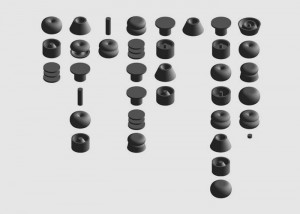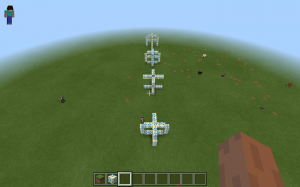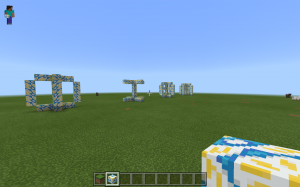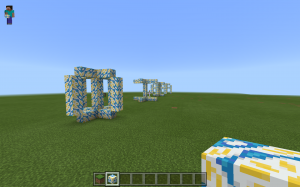UNIVERS REVOLVED is a three-dimensional alphabet consisting of 26 letters. It was created by Korean artist Ji Lee as an attempt to challenge and question conventional reading methods. With the Latin alphabet as the starting point Lee revolves the existing letters around themselves in a 360 degree using a 3D modeling program until they become symmetrical ‘objects’ which the user can arrange to form words and sentences readable from left-to-right, right-to-left, top-to-bottom and bottom-to-top, as well as using them to build sculptures, buildings or furniture. His project ‘3-D Chess Board was created to “add an extra dimension of physicality to the game’s battle field.” Lee combines learning with play. On one hand he wants to challenge the linear way in which we perceive and on the other he seeks to add a playful perspective, turning two-dimensional letters into three-dimensional objects which you can build and create with. (More about the importance of play in learning and building is to be found in Johan Huizinga’s book Homo Ludens). Similar to Lee’s 3D alphabet, graphic designer and illustrator Karl Nawrot uses a playful approach too, where “geometrical forms don’t confine themselves to neither the constraints of two dimensional paper nor the responsibility of representing something else”. This can be seen in several of his works and typefaces including the Bauhaus Type 2012 , Ghost(s) Writer or Stencils etc.
Lee states that the linearity of reading, which we have adapted to as the reading standard, could be a possible limitation to extend our ability to perceive the world in different ways. While linearity offers a system to ease communication it also leaves out certain aspects for which our brains would be able to convey and interpret in their own ways. Linear means for something to be arranged in a straight, or nearly straight, line; a sequential progress of an order. An arrangement that provides the most ‘logical’ way to read, perceive and understand. Linear goes from A to B, B to C, C to D and so on. However there are plenty of examples of non-linear narratives as well. The early calligrams of Emil Bønnelycke and Guillaume Apollinaire, where written words are placed to form a visual image, to Tarantino movies where the scenes are jumping from one chapter to another and back again, almost resembling a circular structure. Although many mention-worthy novels, films and texts belongs in this category, it seems that linearity is reserved for formal matters whereas the non-linearity belongs to the narratives. And this exactly is what is so interesting about Lee’s Universe Revolved.
It could be that it’s either the linearity of which we learn or the mere lack of three dimensionality in most subjects such as literature, physics and mathematics that is the core problem. And if it’s applicable or not is hard to determine, as the linear methods do provide common ground for us to communicate and understand each other in the first place. Imagine if that was only the first step in the learning curve and that Lee and Huizinga’s ways of combining playing and learning was applied, not instead of, but in extend of this first step. Fora dyslexic or a person with dyscalculia it might be difficult to follow a course of which you have to make a logic sense out of a two-dimensional arrangement of letters or numbers, but if these subsets of alphanumeric had an actual, physical existence too, there would be a change for one to grasp, feel; sense these letters and numbers, not only for their logical purpose but for their potential as well. Take the Danish mega brand Lego for instance. The very name is a hybrid of the phrase ‘Leg Godt’ which translates to ‘Play Well’. The playfulness is incorporated in the very name, and though the various sizes and colors of the lego blocks don’t indicate a specific value, it’s possible for kids (and adults) to construct three-dimensional objects, letters, cities etc. in a way that makes sense for them.
For this research we have both made our separate attempts to interpret the Latin alphabet in a personal way. With tin foil and patience, WooRyun Song has created letters by grabbing and crumbling the foil into small, physical landscapes each one containing a different letter. Due to the chosen material it has reflective paths and shiny hills. When the letter A has been formed, you go to B, C, D until all letters has been given a physical existence. She then unfolded the roll of foil, stretching it slightly until it’s back to its two dimensional form. Using digital techniques, she made the last few steps to create a new font in this project called ‘From Plane to Line, From Line to Plane’, outlining the patterns and letter of the tin foil landscaped.
As for Sidsel Lehn Mehlsen, she used the video game Mine-craft (quite similar to the idea of Lego) to build sculptural letters in a virtual park. Inspired by Lee’s approach she revolved the letters around themselves, but unlike a full 360 degree the letters have only been extracted at 90 degrees angles, forming a cross when seen from above.











